ISSN ONLINE(2278-8875) PRINT (2320-3765)
ISSN ONLINE(2278-8875) PRINT (2320-3765)
| K.A Akpado1, C.O Ezeagwu2, A. Ejiofor3, A.O Nwokeke4. |
| Related article at Pubmed, Scholar Google |
Visit for more related articles at International Journal of Advanced Research in Electrical, Electronics and Instrumentation Engineering
Performance evaluation of PID controllers implemented with a clear objective to control the temperature of a ventilation system is the focal point of this paper. Mathematical models of plant (chamber) and actuator were developed. Controller design based on the models was also developed using Simulink. The models were validated through simulation using Matlab/Simulink and the Zeigler-Nichol tuning method was adopted as the tuning technique for varying the parameters of the PID controller in order to achieve a desirable transient response of the system when subjected to a unit step input. A schematic model of the system was also captured using proteus and the animated simulation was carried out to validate the system‟s performance to varying temperature conditions within the chamber. After several assumptions and simulations, a set of optimal parameters was obtained that exhibited a commendable improvement in the overshoot, rise time, peak time and settling time thus improving the robustness and stability of the system.
Keywords |
| Microcontroller, PID-Controller, Transient, Temperature, Stability. |
INTRODUCTION |
| Heating and ventilation systems play a vital role in providing a comfortable, practical and healthy environment in our workplaces and homes. The provision of adequate heating and ventilation is becoming increasingly important in industry, particularly in office buildings with high employee densities. This is not only a key issue in providing work conditions that ensure employee satisfaction and hence increased work output; it is now a health and safety issue that has, in recent times, led to industrial relations problems related to air quality and smoking. Subsequently, fire, health and safety regulations have begun to put tighter limits on the acceptable number of air changes per hour in a building, and acceptable room temperature range. |
| The design, testing, operation and management of ventilation systems rely increasingly on simulation techniques. Such techniques together with model based analysis of ventilation systems and validation methodologies provide an important tool helping the users to carry out thorough tests of the systems by emulating their performance on a computer. Air ventilation systems are equipment usually implemented for maintaining satisfactory comfort conditions by keeping the temperature of the chamber within a certain range |
| The energy consumption as well as indoor comfort aspects of ventilated systems is highly dependent on the design, performance and control of the system and equipment. A mandatory demand to implement the project is the model acquirement which describes the complex behavior of the system. The project implies both acquisition and modeling techniques and control strategies based on the microcontroller |
II. SYSTEM DESIGN |
| The operation of the circuit is based on a PID Controller implemented on a microcontroller and a temperature sensor (LM35). The temperature sensor converts change in temperature to change in electrical signal which is then compared by the PID controller control algorithm to activate the fan for the cooling of the system. The microcontroller accepts inputs from a simple four-key keypad which allow specification of the Set point temperature and it displays both set-point and measured chamber temperatures using an LCD display. Finally, a pulse-width modulation (PWM) output from the controller is used to drive a relay which switches the fan off and on. Figure1 shows the schematic representation of the system design on proteus |
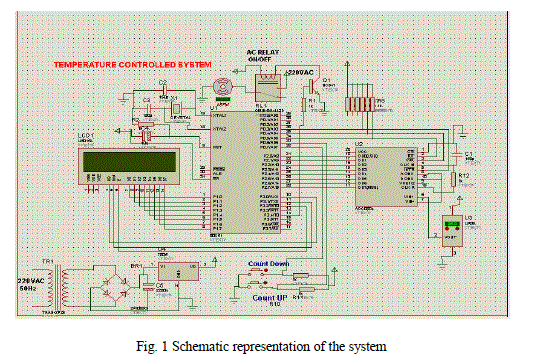 |
| For simplicity in analyzing the system, the block diagram of the system design is shown in figure 2 |
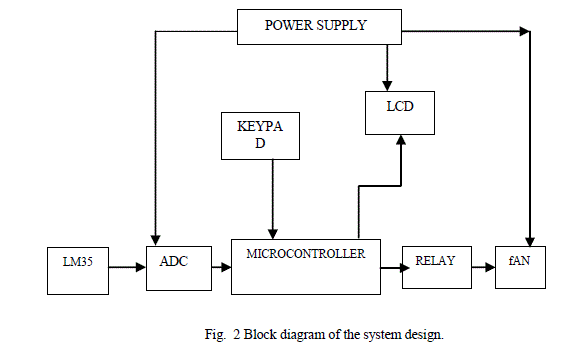 |
III. SYSTEM DESIGN PROCESS |
| The temperature control system was built around several mathematical models needed for the analysis of the system dynamics and the design and evaluation of the control system. Figure 3 shows the closed loop structure of a temperature controlled system. In this structure, the models of the system dynamics; sensors, actuators and computational effects are the basic elements which often can not be altered. The design and fine tuning of the PID controller will be the subject of the analysis. The design and fine tuning of this controller requires application of control system design theory to the dynamic models of the other elements from figure 3. A simplified mathematical model of the overall system will be derived in this section. The system will be validated by simulating the controller model with the plant model, sensor and actuators or any combination of these components. The system should track and/or regulate the desired chamber temperature with minimum peak time, rise time, settling time and overshoot. |
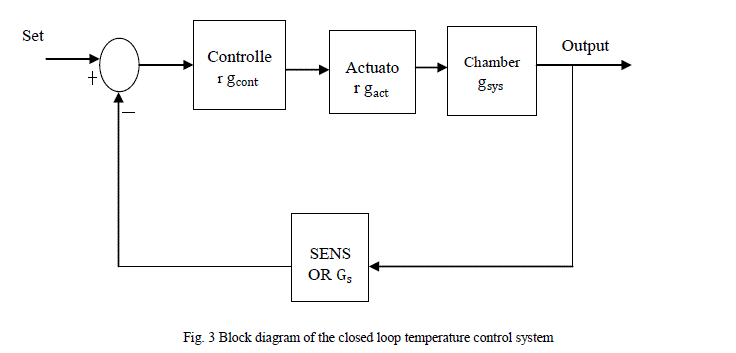 |
A. Mathematical Model of the Chamber |
| Consider a mass M (kg) at temperature θ1. The mass is placed in an environment (chamber) at temperature θ2 and heat ïÿýïÿý is transferred into the mass causing its temperature to rise. The system is a ventilation system. LM35 sensor is used as the sensing device to take the temperature reading of the system and we want to know how long it takes for the sensor to warm up to the same temperature as the air in the room. |
| From the law of heat transfers which states: |
| Temperature rise α Heat added |
 |
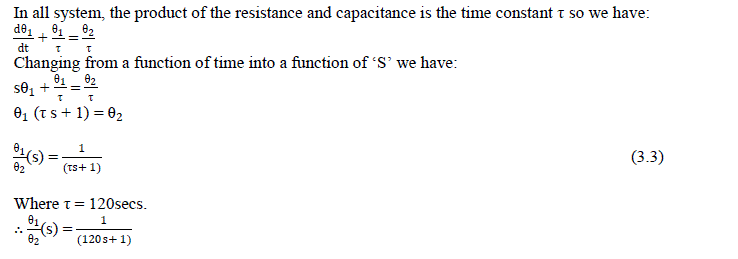 |
 |
B. Mathematical model of the Actuator |
| The relationship between the applied voltage and the energy generated by an electrical cooling element is non-linear. In this paper this relationship is linearised by driving the fan from a pulse width modulated (PWM) signal. A pulse width modulated signal is generated from the microcontroller as shown in Fig. 5 where M and S are the mark and the space of the waveform, and T is the period, i.e. T = M + S. This waveform is used to control a power MOSFET switch where the fan element is connected as the load of this device. |
| The r.m.s. value of the current through the fan can be calculated as: |
 |
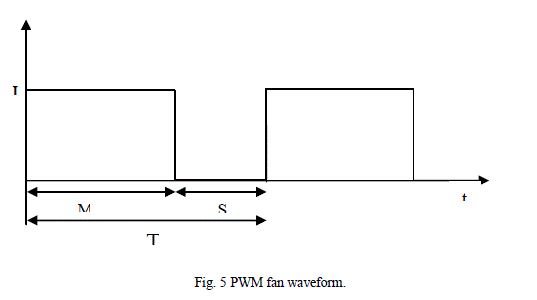 |
| C. Mathematical model of the temperature sensor (LM35) |
| The temperature sensor is a semiconductor device with a linear voltage-temperature relationship specified as 10 mV/ ̢̮̉ , i.e. |
 |
D. Mathematical model of the Controller |
| The Ziegler-Nichols tuning rule was applied in the design of the parallel Proportional-Integral-Derivative controller [2]. The PID controller was selected since it is probably the most extensively used method in industrial process control applications. A large number of references can be found which describe the continuous and digital forms of this controller, its performance evaluation, implementation and auto-tuning forms. |
| The block diagram of the continuous PID controller is shown in figure 6 where, Kp is the proportional gain, Ti is the integral time constant, and Td is the derivative time constant [3]. |
| The transfer function of the standard PID algorithm is: |
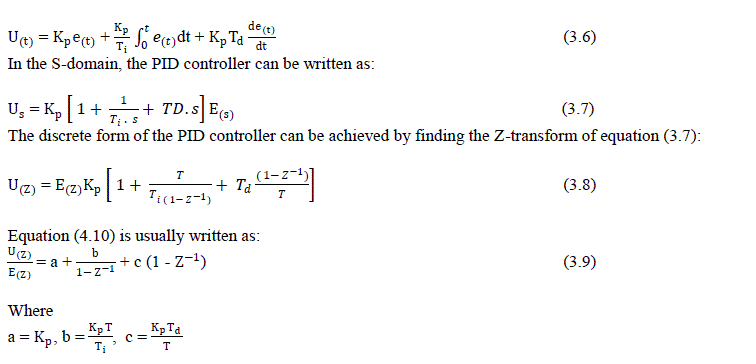 |
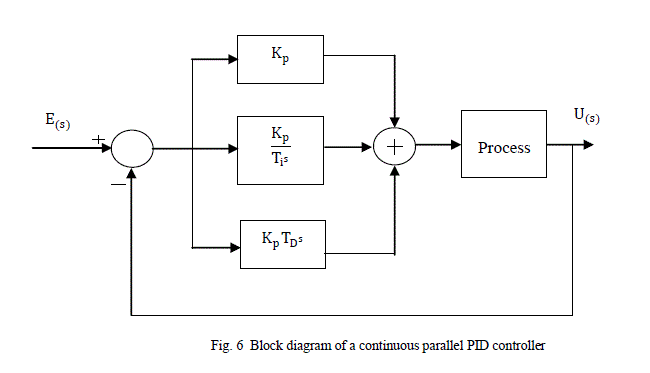 |
IV. SIMULATION AND RESULTS |
| The system was modeled and simulated using Matlab/Simulink. The simulated results of the system control with PID tuning were analyzed. Figure 7. shows the simulink block diagram of the temperature control system |
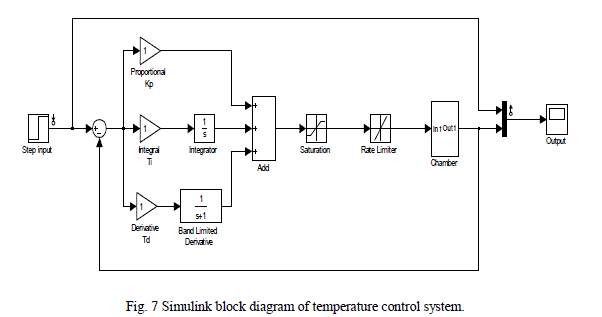 |
A.Test 1: |
| Consider the following assumed values of the parameters of the PID controller and the response of the system to these values |
 |
Plot: |
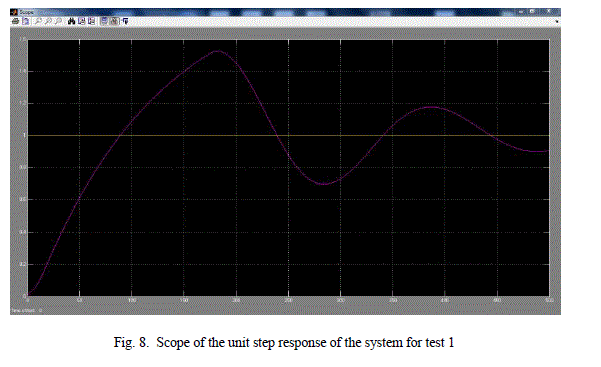 |
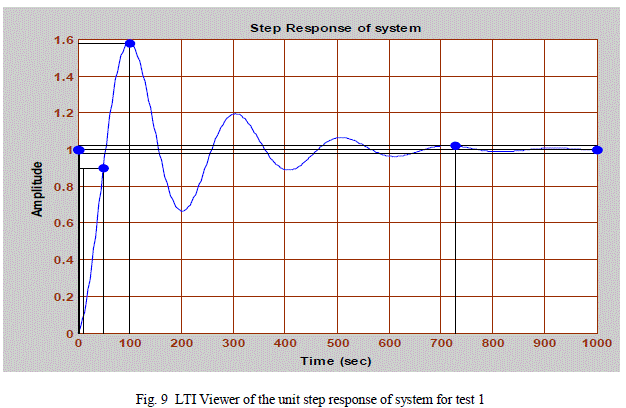 |
Result |
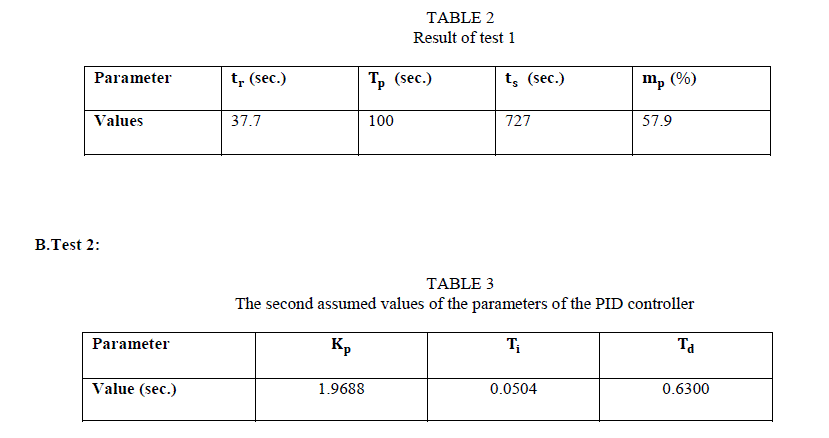 |
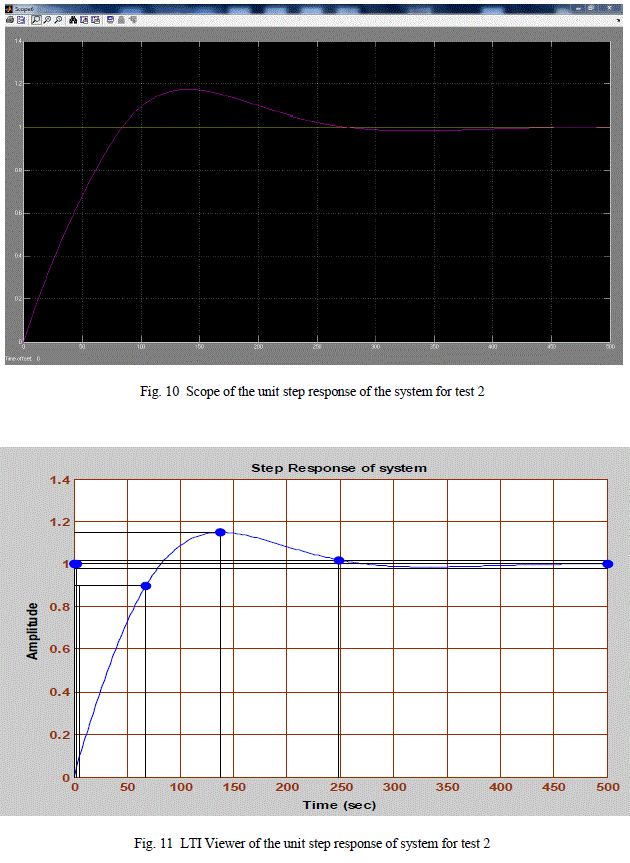 |
| Result: TABLE 4 |
 |
 |
Plot: |
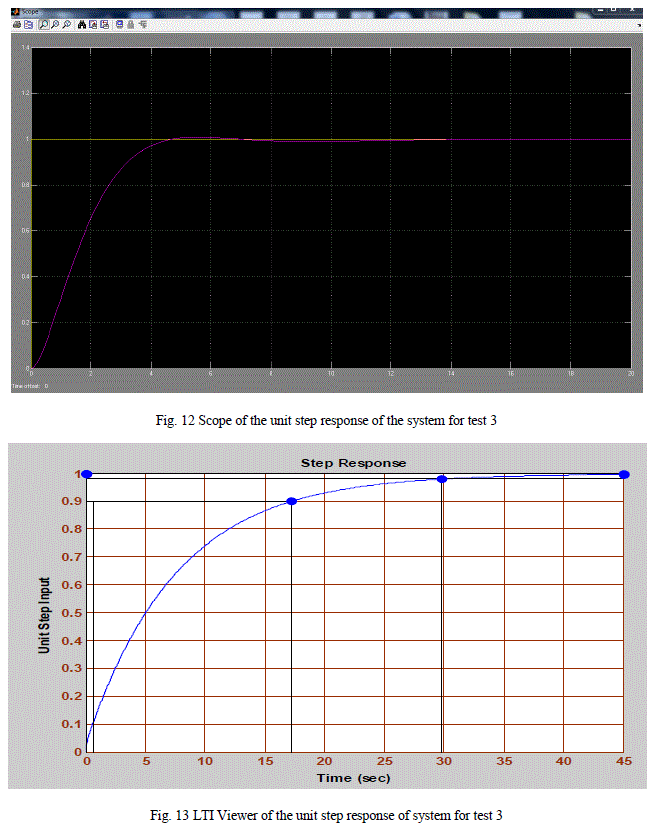 |
| Result: |
 |
| Result of test 3 |
D. Result Analysis |
| Using Matlab/Simulink toolbox, various parameters were tested and the best parameters were used for PID implementation on the microcontroller. The results showed the system responses to a step input with varying PID controller parameters based on Zeigler-Nichols tuning method. It can be inferred from the results that the optimal set of parameters that give a more desirable transient response in terms of short rise time, low overshoot, short settling time, low steady state error are got from the results of test 3 where: |
| Proportional gain, Kp = 16.373, |
| Integral time, Ti = 0.1324, |
| Derivative time, Td = 3.3287. |
| Hence, a PID algorithm implemented on a microcontroller, simulated and fine tuned using the set of parameters obtained from test 3 will exhibit a better control performance to changing temperature conditions in the ventilation system. |
V. CONCLUSION |
| In this paper, the performances of control strategies with feedback for a microcontroller based temperature control in a ventilation system have been investigated. A comparative study of performance of PID based controllers is studied. The aim of the proposed controller is to regulate the temperature of the system to a desired temperature in the shortest possible time with minimum or no overshoot, short rise time, small peak time and short settling time. Mathematical model was efficiently used for the design of the temperature control system. Some aspects of theoretical modeling were described. Experimental modeling was also studied and the best results were obtained with Zeigler-Nichols tuning technique |
References |
|